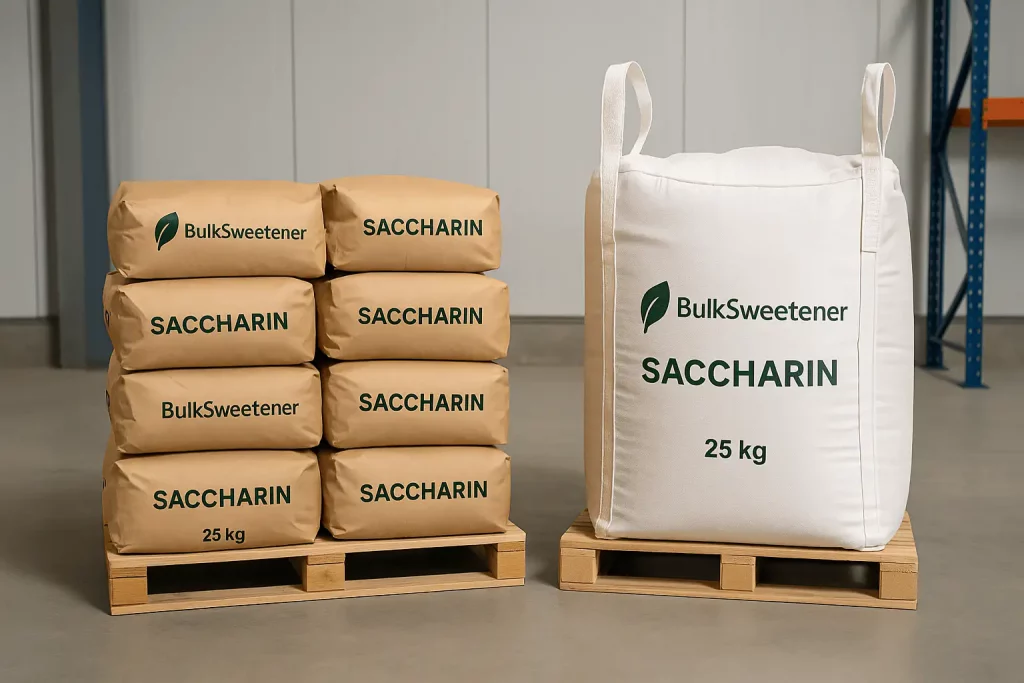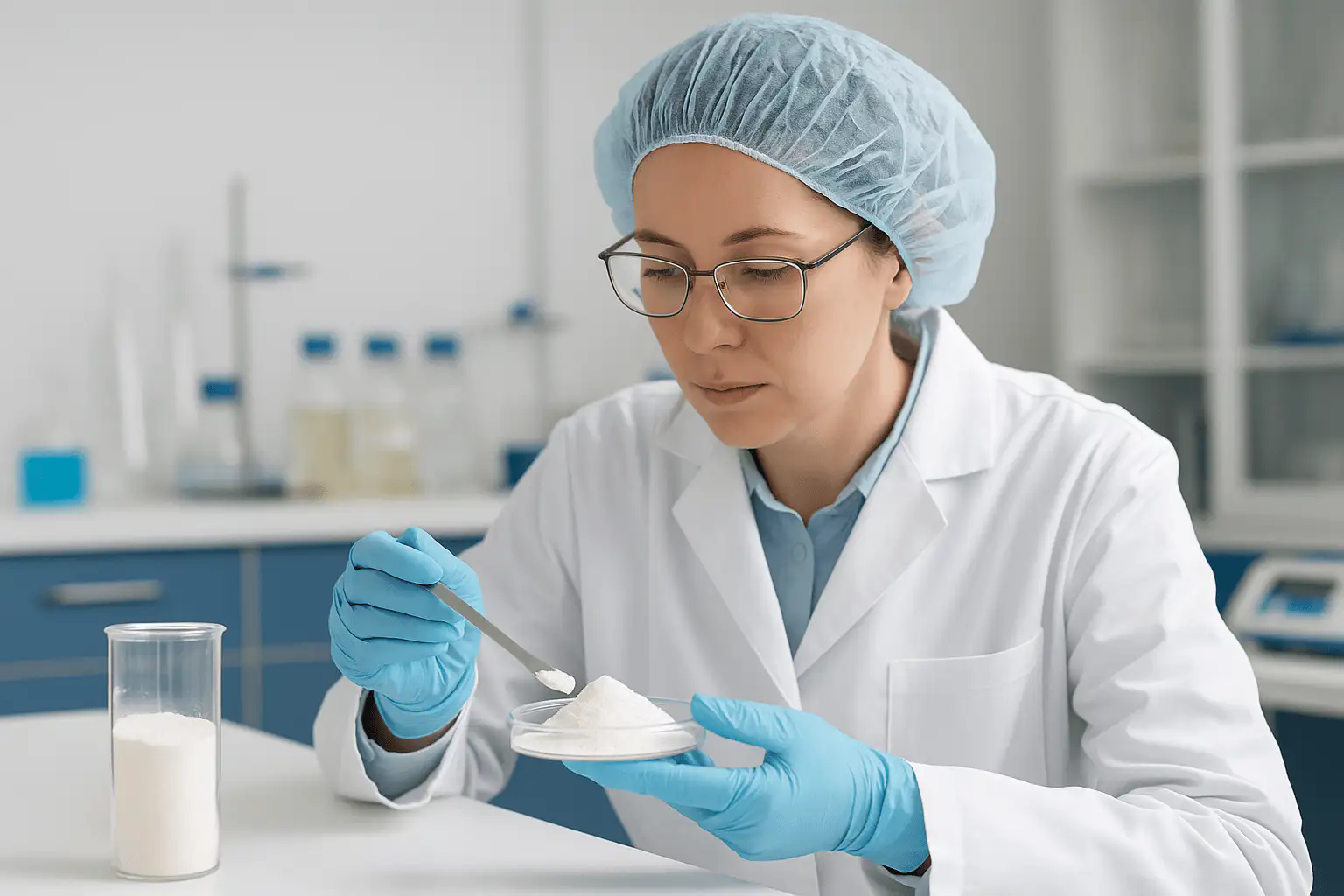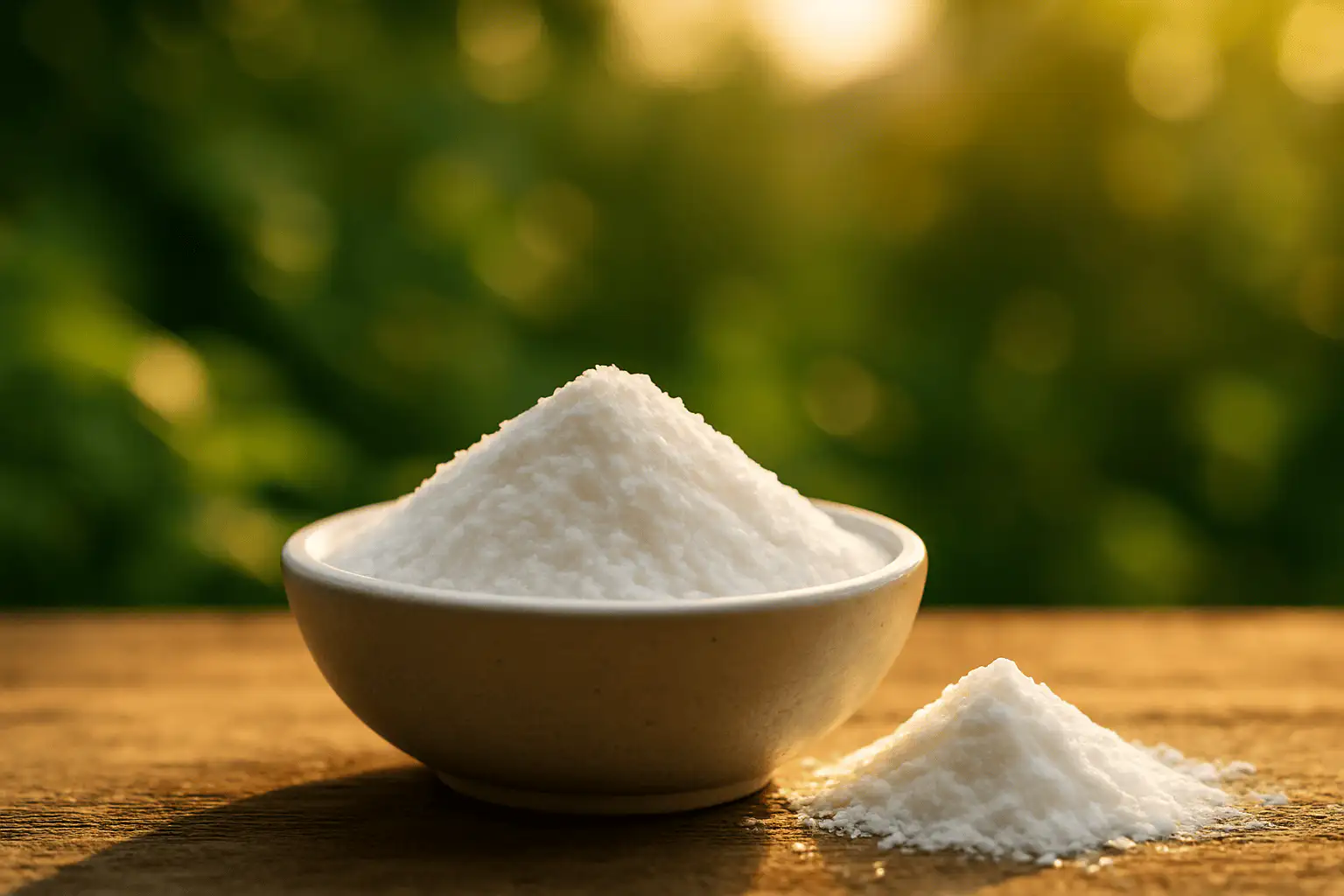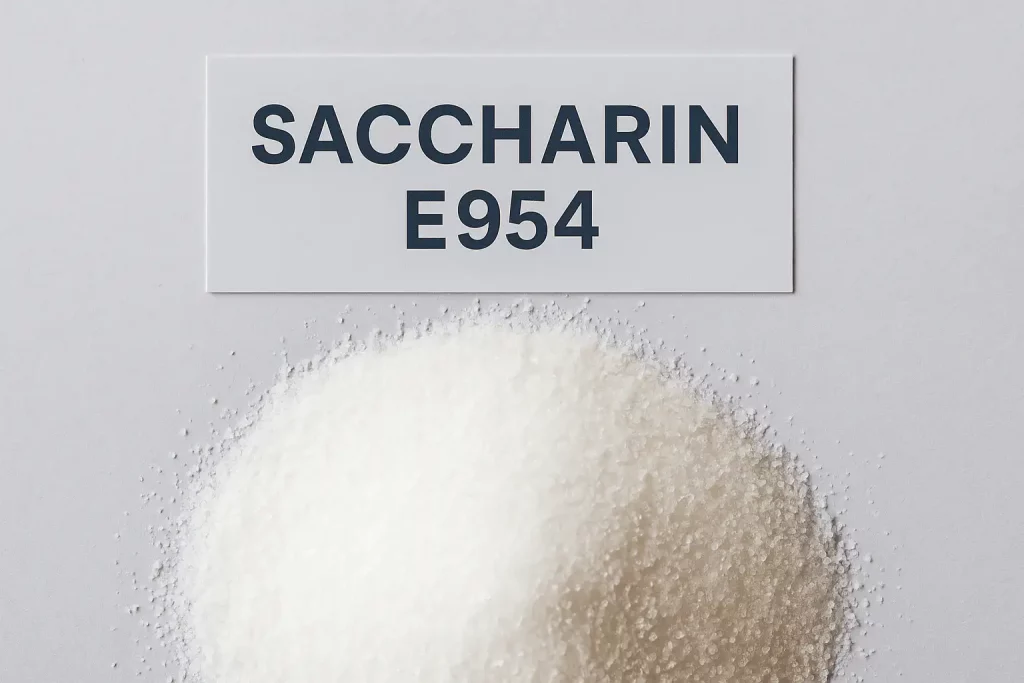Artificial sweetener saccharin (E954) in bulk for industry: consistent quality and reliable supply
Comparing artificial sugar saccharin and saccharin sweetener for beverages, tabletop, confectionery, or pharma? We supply bulk saccharin (E954)—typically sodium saccharin—with tight PSD, very high solubility, and heat/pH stability. Ask for saccharin sugar grades by mesh, documentation (COA/TDS/SDS), and guidance on cyclamate + saccharin systems (availability depends on country). Consistent lots, batch traceability, and reliable lead times for multi-site production.


Formulation Tech Support

Competitive Prices

Natural Taste

Full batch traceability
The risks of buying saccharin sweetener (E954) without standards
- Irregular sweetness in cold systems
- Off-notes from impure lots (metallic/lingering)
- PSD drift → variable dissolution and dusting
We qualify sources, control PSD via calibrated sieving/milling, and cap moisture to spec. Each bulk saccharin lot is QC-checked (assay, pH, moisture, heavy metals, micro) and released with COA/TDS. Result: clean dissolution, predictable sweetness, fewer reworks.

Key Technical Specifications — Bulk Saccharin (E954)
| Category | Specification | Details |
|---|---|---|
| Chemistry | Assay (Saccharin) | ≥99.0% on dry basis (Food grade; FCC/USP/EFSA compliant) |
| Chemical name | 1,2-Benzisothiazol-3(2H)-one-1,1-dioxide | |
| Chemical ID | CAS 81-07-2 · E954 | |
| Relative sweetness (vs sucrose) | ≈300–500× sweeter than sucrose (depending on concentration and medium) | |
| pH (1% aqueous solution) | ~5.0–7.0 | |
| Energy value | Essentially 0 kcal/g (non-nutritive sweetener) | |
| Physical | Appearance | White crystalline powder |
| Odor / Taste | Odorless; very sweet taste, may exhibit slight bitter/metallic note at high concentration | |
| Loss on drying (moisture) | ≤0.2% | |
| Residue on ignition (ash) | ≤0.2% | |
| Solubility in water (20 °C) | ~0.3 g/100 mL (sodium saccharin: highly soluble; ~50 g/100 mL) | |
| Stability | Thermal stability | Stable up to ~225 °C; suitable for baking and pasteurization |
| pH stability | Stable in acidic and neutral conditions; may degrade slowly in strong alkaline solutions | |
| Light sensitivity | Stable under normal light exposure | |
| Shelf life | Minimum 5 years under dry, ambient storage conditions | |
| Quality | Allergens | None expected (free from gluten, soy, nuts, dairy) |
| GMO status | Non-GMO | |
| Heavy metals | Complies with food-grade limits (e.g., Pb < 1 mg/kg) | |
| Microbiological | Meets FCC/EFSA food-grade microbiological standards | |
| Origin / process | Produced by chemical synthesis from toluene or phthalic anhydride derivatives via sulfonation and oxidation, followed by purification and crystallization | |
| Documents | COA, TDS, MSDS available on request | |
Key Technical Specifications — Bulk Saccharin (E954)
| Category | Specification | Details |
|---|---|---|
| Chemistry | Assay (Saccharin) | ≥99.0% on dry basis (Food grade; FCC/USP/EFSA compliant) |
| Chemical name | 1,2-Benzisothiazol-3(2H)-one-1,1-dioxide | |
| Chemical ID | CAS 81-07-2 · E954 | |
| Relative sweetness (vs sucrose) | ≈300–500× sweeter than sucrose (depending on concentration and medium) | |
| pH (1% aqueous solution) | ~5.0–7.0 | |
| Energy value | Essentially 0 kcal/g (non-nutritive sweetener) | |
| Physical | Appearance | White crystalline powder |
| Odor / Taste | Odorless; very sweet taste, may exhibit slight bitter/metallic note at high concentration | |
| Loss on drying (moisture) | ≤0.2% | |
| Residue on ignition (ash) | ≤0.2% | |
| Solubility in water (20 °C) | ~0.3 g/100 mL (sodium saccharin: highly soluble; ~50 g/100 mL) | |
| Stability | Thermal stability | Stable up to ~225 °C; suitable for baking and pasteurization |
| pH stability | Stable in acidic and neutral conditions; may degrade slowly in strong alkaline solutions | |
| Light sensitivity | Stable under normal light exposure | |
| Shelf life | Minimum 5 years under dry, ambient storage conditions | |
| Quality | Allergens | None expected (free from gluten, soy, nuts, dairy) |
| GMO status | Non-GMO | |
| Heavy metals | Complies with food-grade limits (e.g., Pb < 1 mg/kg) | |
| Microbiological | Meets FCC/EFSA food-grade microbiological standards | |
| Origin / process | Produced by chemical synthesis from toluene or phthalic anhydride derivatives via sulfonation and oxidation, followed by purification and crystallization | |
| Documents | COA, TDS, MSDS available on request | |
Client testimonials and reviews
Bara Ezquerra
We use bulk saccharin (E954) for tabletop sticks. Clean profile, very fast dissolution, and consistent PSD—our HORECA clients reorder. COA/TDS and batch traceability simplify audits.
Cacao Delta
For coatings we selected fine-mesh saccharin sweetener. Low dose, heat stability, and no recrystallization in our process. Blends with cyclamate saccharin deliver sugar-like timing where legally permitted.
Acasyna
In syrups and flavor bases, artificial sweetener saccharin gives immediate impact with minimal solids. Tight moisture and uniform particles reduce adjustments and keep a clean finish over storage.
Oroyes
As a distributor, bulk saccharin moves well thanks to reliable specs, lead times, and competitive pricing. Documentation arrives complete, which helps our foodservice customers.
Frequently Asked Questions — Bulk Saccharin
How sweet is saccharin (E954)?
Saccharin sweetener is ~300–500× sweeter than sucrose by weight (grade/matrix-dependent), enabling very low inclusion in aspartame-free formulations if desired.
Is saccharin safe?
Saccharin has been evaluated by major authorities for decades. The ADI commonly cited is 5 mg/kg body weight/day. Use according to local regulations and labeling.
What does “E954 saccharin / e 954” mean?
E954 is the EU additive code for saccharin (often used as sodium saccharin in food). It indicates a permitted sweetener when used within category limits.
How does saccharin compare to sugar (“saccharin sugar”)?
It’s an artificial sugar saccharin alternative with zero calories at use levels. Sweetness is intense; some matrices may show a lingering note—blends help optimize profile.
Where is saccharin used most?
Beverages/RTD, tabletop, confectionery, bakery, oral-care, pharma (as an excipient sweetener). It dissolves rapidly and is thermally/pH stable across many processes.
Is saccharin heat and pH stable?
Yes—heat stable under pasteurization/UHT and typical baking. Functional over a broad pH range (~2–9); validate at extremes.
What is “cyclamate saccharin / cyclamate et saccharine”?
A widely used blend in some regions; cyclamate + saccharin shows synergy and a more sugar-like timing. Availability and use depend on local regulations (cyclamate is restricted in certain countries).
What specs matter for bulk saccharin?
Assay ≥99%, defined PSD/mesh (60–200), low moisture, heavy metals/micro compliant, and full documentation (COA/TDS/SDS) with batch traceability.
How should bulk saccharin be stored?
Keep sealed, cool, and dry (commonly <60% RH), away from volatiles and light. Use pallets and FIFO to maintain flow and assay.
What drives saccharin wholesale pricing?
Grade/assay, PSD (mesh), certifications (Non-GMO, Kosher/Halal), packaging (25-kg vs big-bag), MOQ, Incoterms, destination, and freight/currency determine the final bulk saccharin price.
